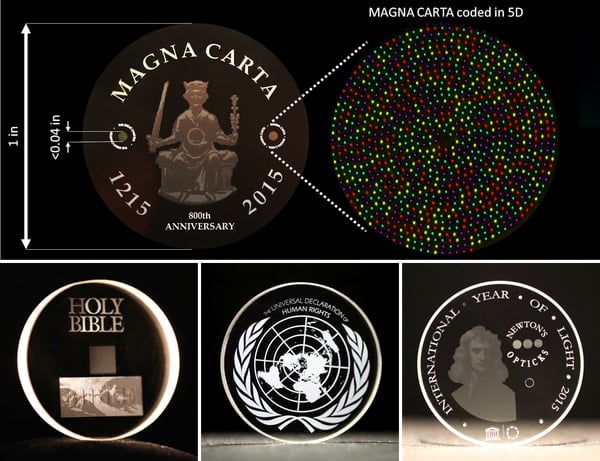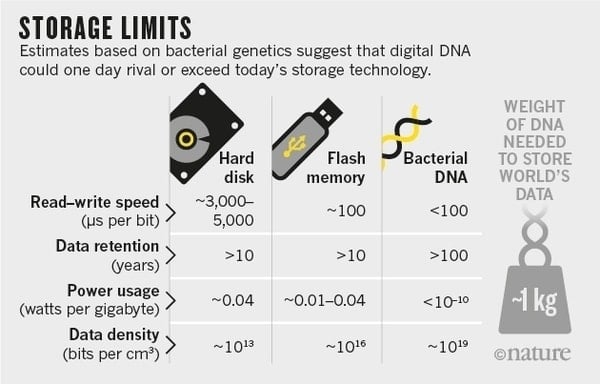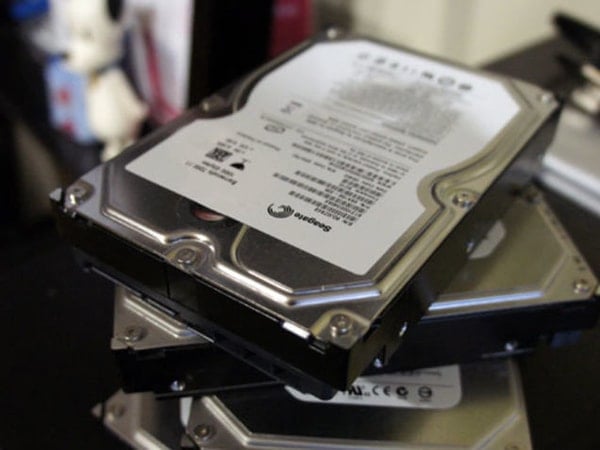
Are We on the Verge of an Eternal Data Storage Solution?
September 7, 2016
Friday Fun Blog: Robots Sumo Wrestling Editon
September 9, 2016Data Storage on the Cloud
What’s nice about the cloud is that nearly all facets of everything—people, businesses, groups of people, larger businesses—can take advantage of the cloud. It doesn’t favor big businesses over small, or the picture-taking narcissist over the quiet “only use their computer for taxes” people.
The cloud is all loving, all caring, and all knowing.

Wait, what was that last part? Don’t worry about it.
As you probably know, the cloud is the same thing as every other way to store data—except that it’s compartmentalized and shared amongst all users. So, if you store your pictures on iCloud, chances are that you’re not using all the space on a server’s hard drive. Therefore, Apple sections of a bit of that hard drive space for you, and sections off the rest among others.
Obviously, this can raise serious security concerns, but hey, doesn’t everything nowadays?
The cloud’s popularity is clearly related to how cost-effective it is for not only the user, but the provider as well. Since you’re not using all of the hard drive, you don’t have to pay for all the space. And since the provider doesn’t have to provide a hard drive for each user, they save money on hardware costs.
But as we’ve discussed many times on this blog, if you really want to protect your data—you should probably stay on the ground.
Storing Your Data Locally
Storing your data locally is a great way to have full control over your data at all times. This works great for the everyman and even for some small businesses. But if you have a lot of data, that means a lot of overhead costs: IT people, servers, server space, server cooling, etc.
That’s where colocation comes into play, which is like a long-distance way of storing locally, but at a fraction of those overhead costs. But we’ll get to that later.
Anyways, local data storage does not have to be reliant on the Internet in order to retrieve information. This means is can be a faster and more secure way to save all your data.
Of course, transferring all of your locally stored files over once you purchase a new machine can be laborious and time-consuming. And having multiple backup hard drives, without a label machine can get a little risky as well. There’s always a risk that something could go wrong. But at the same time, all your data is nice and safe in your clearly fireproof housing, right?
5-D Data Storage—What Is It?
We wrote a little piece on this earlier in the week and it’s so fascinating to us that we thought we’d revisit it.
I bet you thought, much like I did, that things could only be constructed in three dimensions.
Wrong.
Apparently, some smart scientists have discovered a way to store tons of data in five dimensions on one of the least likely materials you could think of for this type of thing: glass.
Those same scientists are referring to 5-D data storage on glass as an eternal data storage solution. Go figure.
Here’s a quote by one the founder of this technology, Dr. Peter Kazansky of the University of Southampton (UK):
“Normally, you don’t think about whether something can live forever. But it seems that, with our technology, we’ve managed this. If we record some data or documents, they’ll live forever. That could be interesting for future civilizations. We can now claim that information is immortal.”
To learn more on this subject, you can watch this video: https://www.youtube.com/embed/ItNT9BGDB4o
Or read our feature-length article here.
Storing Data on DNA? What?
Wait, what (again). Yes, De-oxyribo Nucleic Acid. That stuff you learned about way back when. That stuff that makes you, you. Did you ever think how powerful that stuff is? How much data that stuff stores to make sure everything in your body is actually supposed to be your body?
Two researchers at the European Bioinformatics Institute (EBI) apparently thought the same thing and then went on to successfully store 739 kilobytes of data inside the very strands of human DNA.
That truly deserves a “what?”
The whole study, which you can read more about here, is very complicated and far above what I could ever hope to comprehend, but here’s a nifty chart to stop your brain from becoming numb in the meantime:

Unfortunately, this kind of technology is very expensive, pre-alpha stage, and they are still working out the kinks. As the paper states:
“Before DNA can become a viable competitor to conventional storage technologies, researchers will have to surmount a host of challenges, from reliably encoding information in DNA and retrieving only the information a user needs, to making nucleotide strings cheaply and quickly enough.”
Fun fact: your brain named itself.
Good Ol’ Colocation
Now let’s come down from the high of those super-cool, super-futuristic ways to store data and get back into reality (read: boring).
Remember when we talked about how storing your data locally could lead to overhead costs? Well, colocation is the solution.
Colocation is taking your server and placing it inside a data center where it shares power, network, and cooling costs with other servers. The server is still yours, you’re just renting the space.
For small to large businesses, this option is usually far cheaper than maintaining an in-house data center. Plus you get the added benefit of a 24/7 support staff, and protection from natural disasters. No one else, except you and the staff, has access to your server. It’s a win-win.
Also, it’s very important to make sure your data is backed up, no matter which data storage solution you choose. But that’s an article for a different day.
Until then, why don’t you tell us a little bit about your favorite or unique ways you store your data in the comments below. We’d love to hear!
Data storage seems like such an archaic, drag-you-through-the-mud kind of topic. But it doesn’t have to be. I mean, it usually is, but we can change that. So, if you’ll accompany me through this data storage journey, we’ll come to a very happy medium of you discovering reliable, somewhat-futuristic, or even ways you didn’t even know about to store your data. Let’s begin!
Data Storage on the Cloud
What’s nice about the cloud is that nearly all facets of everything—people, businesses, groups of people, larger businesses—can take advantage of the cloud. It doesn’t favor big businesses over small, or the picture-taking narcissist over the quiet “only use their computer for taxes” people.
The cloud is all loving, all caring, and all knowing.

Wait, what was that last part? Don’t worry about it.
As you probably know, the cloud is the same thing as every other way to store data—except that it’s compartmentalized and shared amongst all users. So, if you store your pictures on iCloud, chances are that you’re not using all the space on a server’s hard drive. Therefore, Apple sections of a bit of that hard drive space for you, and sections off the rest among others.
Obviously, this can raise serious security concerns, but hey, doesn’t everything nowadays?
The cloud’s popularity is clearly related to how cost-effective it is for not only the user, but the provider as well. Since you’re not using all of the hard drive, you don’t have to pay for all the space. And since the provider doesn’t have to provide a hard drive for each user, they save money on hardware costs.
But as we’ve discussed many times on this blog, if you really want to protect your data—you should probably stay on the ground.
Storing Your Data Locally
Storing your data locally is a great way to have full control over your data at all times. This works great for the everyman and even for some small businesses. But if you have a lot of data, that means a lot of overhead costs: IT people, servers, server space, server cooling, etc.
That’s where colocation comes into play, which is like a long-distance way of storing locally, but at a fraction of those overhead costs. But we’ll get to that later.
Anyways, local data storage does not have to be reliant on the Internet in order to retrieve information. This means is can be a faster and more secure way to save all your data.
Of course, transferring all of your locally stored files over once you purchase a new machine can be laborious and time-consuming. And having multiple backup hard drives, without a label machine can get a little risky as well. There’s always a risk that something could go wrong. But at the same time, all your data is nice and safe in your clearly fireproof housing, right?
5-D Data Storage—What Is It?
We wrote a little piece on this earlier in the week and it’s so fascinating to us that we thought we’d revisit it.
I bet you thought, much like I did, that things could only be constructed in three dimensions.
Wrong.
Apparently, some smart scientists have discovered a way to store tons of data in five dimensions on one of the least likely materials you could think of for this type of thing: glass.
Those same scientists are referring to 5-D data storage on glass as an eternal data storage solution. Go figure.
Here’s a quote by one the founder of this technology, Dr. Peter Kazansky of the University of Southampton (UK):
“Normally, you don’t think about whether something can live forever. But it seems that, with our technology, we’ve managed this. If we record some data or documents, they’ll live forever. That could be interesting for future civilizations. We can now claim that information is immortal.”
To learn more on this subject, you can watch this video: https://www.youtube.com/embed/ItNT9BGDB4o
Or read our feature-length article here.
Storing Data on DNA? What?
Wait, what (again). Yes, De-oxyribo Nucleic Acid. That stuff you learned about way back when. That stuff that makes you, you. Did you ever think how powerful that stuff is? How much data that stuff stores to make sure everything in your body is actually supposed to be your body?
Two researchers at the European Bioinformatics Institute (EBI) apparently thought the same thing and then went on to successfully store 739 kilobytes of data inside the very strands of human DNA.
That truly deserves a “what?”
The whole study, which you can read more about here, is very complicated and far above what I could ever hope to comprehend, but here’s a nifty chart to stop your brain from becoming numb in the meantime:

Unfortunately, this kind of technology is very expensive, pre-alpha stage, and they are still working out the kinks. As the paper states:
“Before DNA can become a viable competitor to conventional storage technologies, researchers will have to surmount a host of challenges, from reliably encoding information in DNA and retrieving only the information a user needs, to making nucleotide strings cheaply and quickly enough.”
Fun fact: your brain named itself.
Good Ol’ Colocation
Now let’s come down from the high of those super-cool, super-futuristic ways to store data and get back into reality (read: boring).
Remember when we talked about how storing your data locally could lead to overhead costs? Well, colocation is the solution.
Colocation is taking your server and placing it inside a data center where it shares power, network, and cooling costs with other servers. The server is still yours, you’re just renting the space.
For small to large businesses, this option is usually far cheaper than maintaining an in-house data center. Plus you get the added benefit of a 24/7 support staff, and protection from natural disasters. No one else, except you and the staff, has access to your server. It’s a win-win.
Also, it’s very important to make sure your data is backed up, no matter which data storage solution you choose. But that’s an article for a different day.
Until then, why don’t you tell us a little bit about your favorite or unique ways you store your data in the comments below. We’d love to hear!

